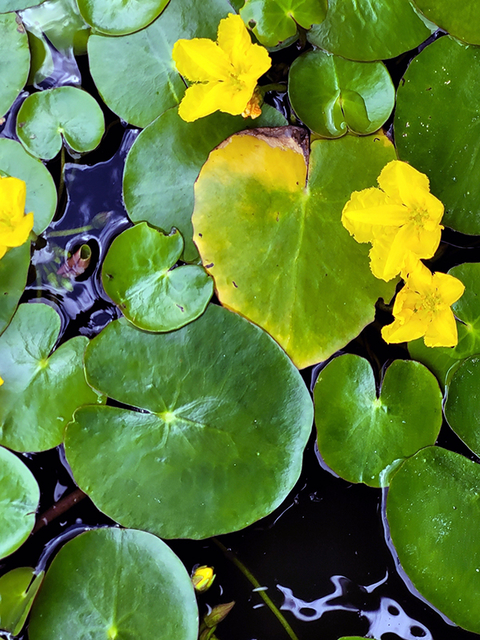With a name as pleasant as yellow floating heart, and leaves to match with their whimsical shape, it’s no wonder that people chose to bring this aquatic plant into their water gardens. This is likely how the plant was initially introduced to wild landscapes, through flooding and intentional dumping of the plant near bodies of water.
Yellow floating heart (Nymphoides peltata) has heart-shaped and wavy-edged floating leaves with flowers that are bright yellow and have five fringed petals. Flowers sit atop stalks that are held above the water’s surface. These plants can be mistaken for Minnesota’s native floating plants including yellow pond lily, American lotus, and American white waterlily.
Yellow floating heart can spread by fragments of the nodes, leaves, and rhizomes. The presence of this plant can be detrimental to native habitats as it creates dense mats that shade out other aquatic plants, reduce water movement, and alter nutrient cycling. Stagnant water provides conditions where mosquito larvae thrive, creating potential for human health hazards as a result. Large mats also make it difficult to enjoy water recreation activities such as swimming and boating.
While not currently regulated in Minnesota, the DNR has proposed classifying this plant as a prohibited invasive species. Yellow floating heart is not presently in Minnesota.
More information on this plant can be found on the Invasive Species Centre website.


